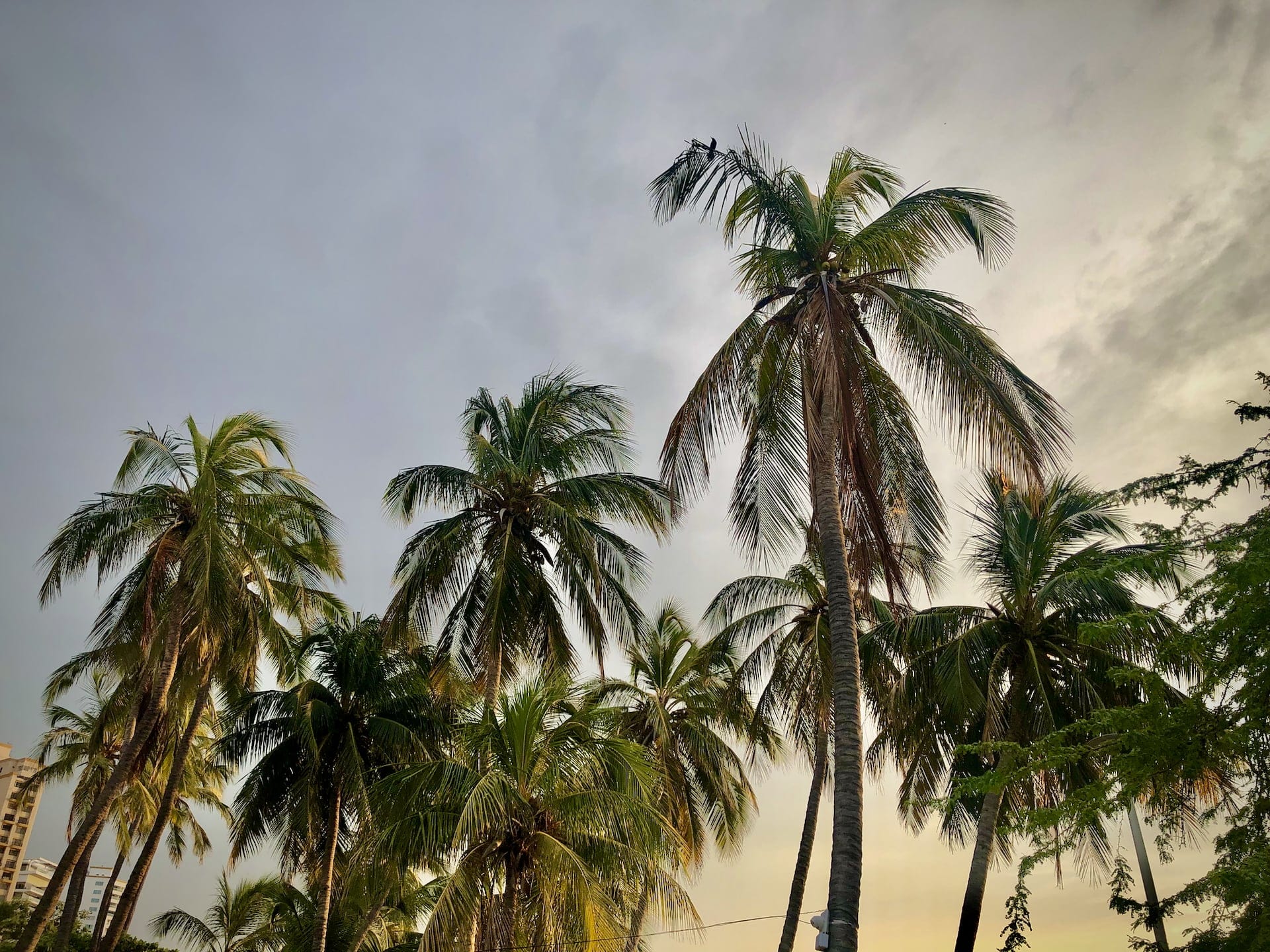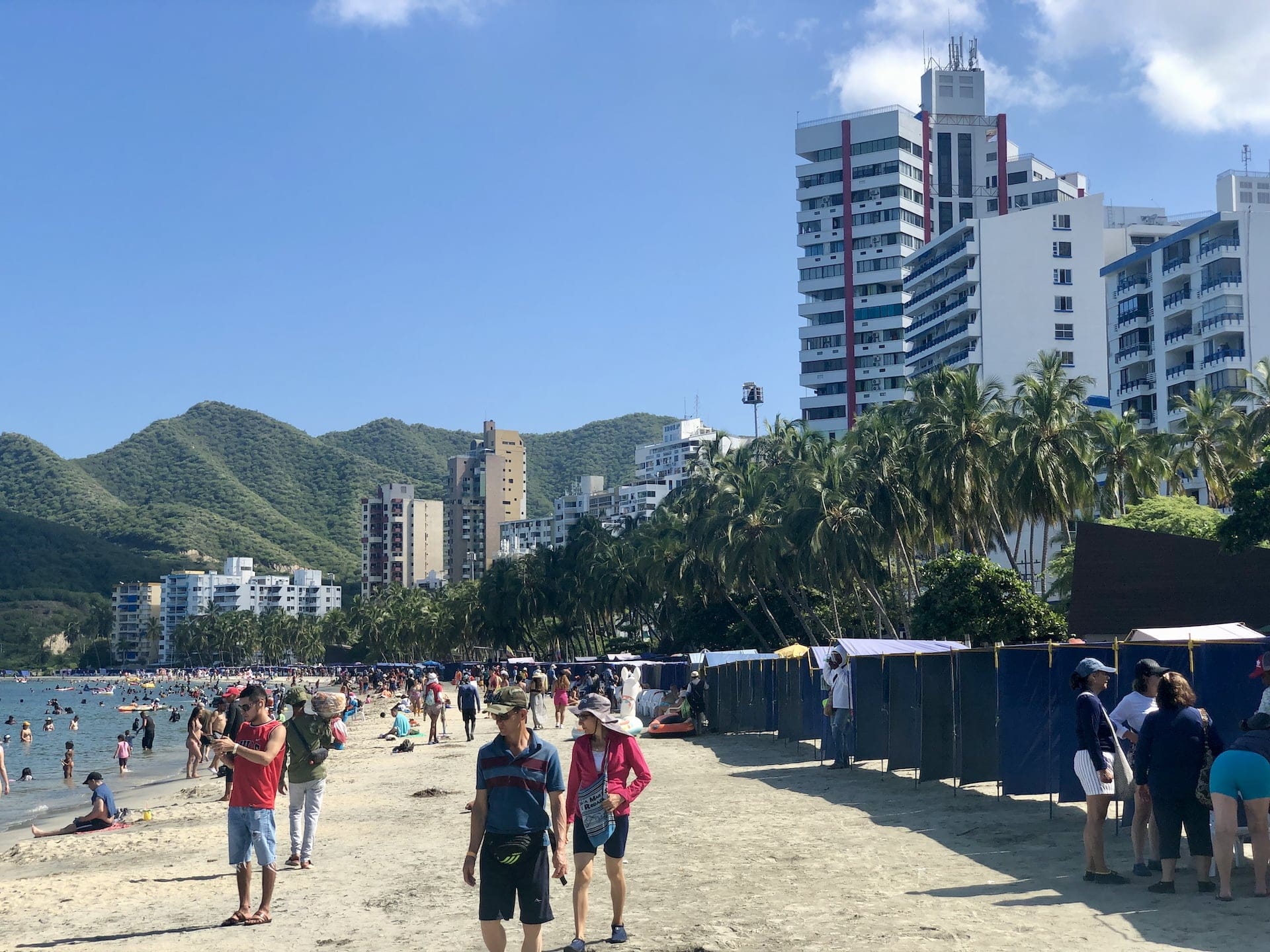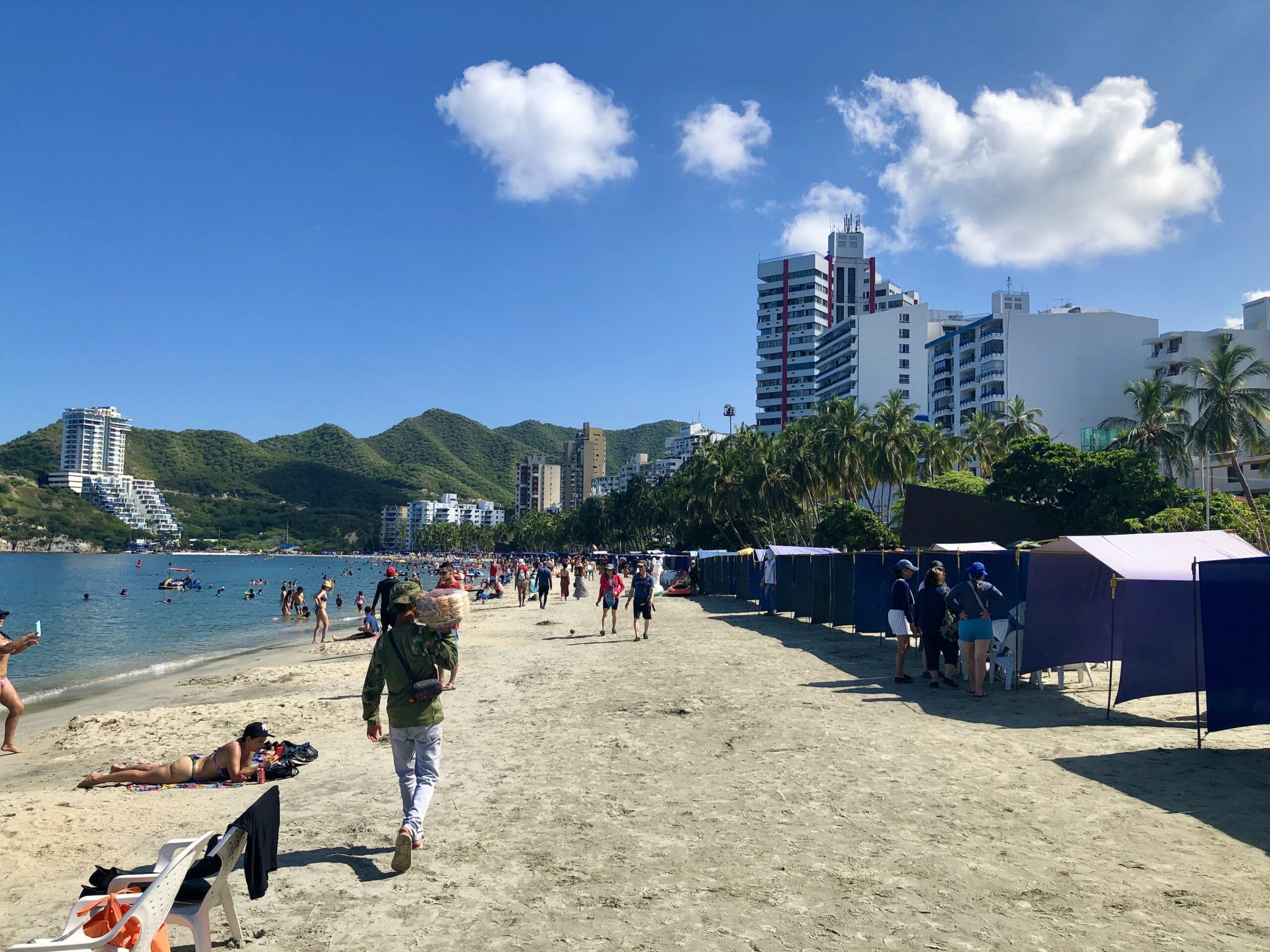When planning a trip to Colombia’s Caribbean coast, most travelers dream of postcard-perfect beaches and vibrant culture. Santa Marta, the country’s oldest city, usually serves as a convenient gateway to more famous destinations like Tayrona National Park or the mountain village of Minca. That was exactly our plan – use it as a quick stopover, nothing more. But what started as a anxiety-filled visit turned into an enlightening lesson about trusting your instincts over internet horror stories.
We made our first mistake while still in Bogotá: during some idle moments, we started browsing the internet about what awaited us in Santa Marta. Well, what we found was, to put it mildly, devastating. Our casual research into Santa Marta quickly descended into a Reddit rabbit hole of tourist horror stories. Threads painted Santa Marta as a crime-ridden danger zone where broad-daylight robberies were as common as afternoon coffee, with incidents reported on the very street where we’d booked our stay. The stories triggered such anxiety that we made our first questionable decision: sacrificing our deposit to book a supposedly safer Airbnb near Rodadero Beach, in the suburban area of Gaira.
Our introduction to Santa Marta’s tropical climate came at Simón Bolívar Airport, where the Caribbean humidity hit us like a wall after Bogotá’s cool mountain air. While this is Santa Marta’s airport, it’s actually a good 30-minute drive from the city, with the closer Rodadero being around 10 kilometers away. The taxi ride turned out to be our second shocking experience. At one point, motorcyclists equipped with batons started following our taxi, which wasn’t exactly a good omen. They eventually fell behind and nothing happened, but let’s be honest – we were scared.
The airport taxi service has a formal kiosk inside the terminal with set rates – use this instead of accepting offers from drivers outside.

This heightened state of alert led to our second mistake: we became tense. Despite being greeted by one of the friendliest property caretakers we’d ever met, our paranoia had reached such levels that our first venture out – merely to visit the nearby shopping mall – looked more like a covert operation. We left behind everything of value: watches, phones, credit cards, carrying only enough cash for basic supplies, prepared for trouble at every corner. Looking back, we can’t help but laugh at ourselves while cringing at our overcautious behavior.
Rodadero and the surrounding area is actually a family-friendly resort zone and party destination, not a dangerous neighborhood at all. This started to dawn on us when we entered the shopping mall, which, let’s face it, was much nicer than the one back home at the end of my street, with a more reassuring crowd. Unfortunately, our initial tension cast a shadow over our entire stay, though in retrospect, we didn’t encounter any problems. (Except for the Veinte de Julio “beer” from the Ara supermarket across the street. Don’t drink Veinte de Julio beer. Don’t buy a case or two of it. Yes, it’s dirt cheap, but just don’t do it! Some bargains just aren’t worth the savings.)
But what can you actually do at Playa El Rodadero? Mostly beach activities, swimming in the perfectly warm Caribbean Sea, relaxing, and partying in the evening. That’s exactly what we did. During the day, we set up base at the beach. You can rent tent-like covered spots where you can spend time in relative shade when you’re not in the water. But be careful: the shade can lull you into a false sense of security, and you can easily get completely sunburned if you don’t apply sunscreen frequently enough. I’m speaking from experience.

The beach scene here offers a fascinating glimpse into Colombian coastal culture. Unlike many world-famous beaches where convenience comes at a premium, Rodadero’s entrepreneurial spirit ensures you never need to leave your lounger. Beer? Of course. Cocktails? Absolutely! Masajito mi corazón? Ahora no, gracias. Want to get a permanent souvenir in the form of a tattoo? Well… (Yes, really – we watched someone get inked right there on the sand, though we can’t exactly recommend it.)
Rodadero Beach offers a more resort-like atmosphere than Santa Marta proper, making it ideal for first-time visitors to the region.
Some might find this constant commerce annoying, but none of the vendors or service providers were particularly pushy, and cold drinks are always welcome on the beach. It’s worth chatting with some of them. We did so with a friendly young man after politely declining the less legal goods, the ladies (he mentioned that boys were also available), and other offerings. We learned that most beach vendors are Venezuelan refugees who fled their country to try their luck in the neighboring country. Their stories add depth to the tourist experience, revealing layers of South American economic reality beneath the holiday atmosphere. This is actually a recurring theme throughout Colombia, which you’ll encounter in our other travel stories as well.
After sunset, it’s worth exploring the streets along the beach – this is when life really begins. The heat only moderately decreases, but locals head out to party anyway. In Rodadero, based on our observations, there are two types of local visitors: families with children and young people looking to party. Both find their preferred entertainment. The streets are filled with loud music at this time, with bars, restaurants, shops, and street food vendors taking over public spaces, and everyone visibly enjoying their vacation. One of the most entertaining sights is what we dubbed the “party buses”: large, open-top vehicles that emerge from their daytime hiding spots to cruise the streets with music blasting. Interestingly, unlike their rowdier Eastern European counterparts, these mobile parties maintain an almost family-friendly atmosphere.
Evening activities are lively and family-friendly, especially in the streets around the beach where locals and tourists mingle safely.
We eventually continued our journey to Minca and later Tayrona National Park after two days of relaxation, only to return for a single short night – this time to the “real” Santa Marta. Not much happened that evening besides having dinner in the city about 20 meters from our hotel entrance, as we had arrived from Tayrona after a full day of hiking, and the next morning we were already targeting the bus to Cartagena from the bus station. But those are different stories. Fortunately, much less embarrassing than our paranoia about Santa Marta.
Looking back, our Santa Marta experience serves as a perfect reminder of a crucial travel lesson: while research is important, don’t let internet horror stories hijack your adventure. Sometimes the best travel experiences come when we let go of our preconceptions and embrace the destination for what it is – not what we fear it might be.

